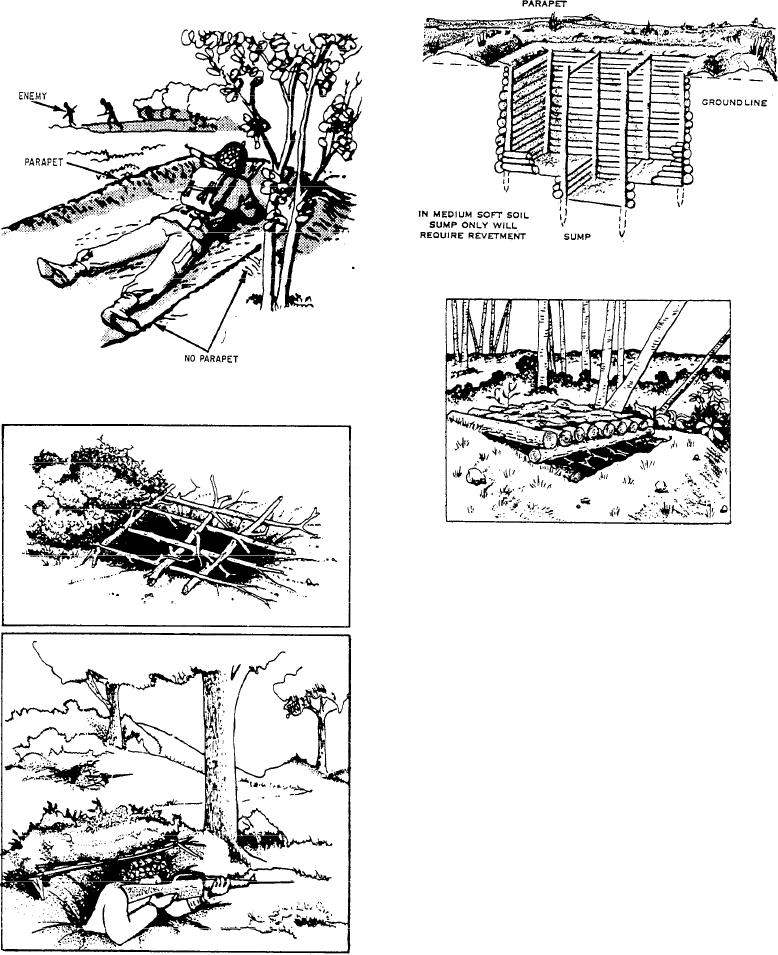
Figure 7-3.--Cut-timber revetment.
Figure 7-1.--Skirmisher's trench.
Figure 7-4.--Fighting hole with overhead cover.
it well away from the position. Dispose of fresh soil
under low bushes, in a stream, pond, or ravine, or
camouflage it in another manner, to the rear of the
forward edge of battle area.
Types of Dug-in Emplacements
The simplest type of dug-in emplacement is the
SKIRMISHER'S TRENCH, as shown in figure 7-1.
This shallow pit type of emplacement provides a
temporary, open, prone firing position for the individual
rifleman. When the situation demands immediate
shelter from heavy enemy fire and when existing
defiladed firing positions (positions which provide
protection from fire or observation, such as ridges,
embankments, and ravines) are not available, each man
lies prone or on his side. With his entrenching tool, he
scrapes and piles the soil in a low parapet between him
and the enemy. Thus a shallow, body-length pit can be
Figure 7-2.--Camouflaged fighting holes.
formed quickly in all but the hardest ground. The trench
7-2

